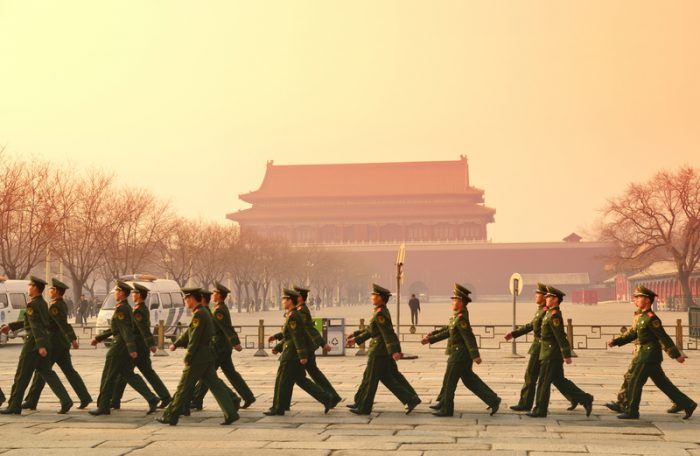Today is the 30th anniversary of the government crackdown on protests in Tiananmen Square in Beijing, China.
Around one million people eventually participated in pro-democracy demonstrations in the Chinese capital. A majority of the protesters were university students, hopeful of change to their country. Their story inspired many within their country, as well as around the world. The government's violent response across June 3 and 4 is one that it has tried to keep secret for decades.
So what did happen? Did change come to China? And why does it matter today?
How the protests began
General Secretary Hu Yaobang visits France in 1986. At this time, China was slowly beginning to change. (Getty Embed)
In the mid-1980s, China had been a communist country for about 40 years. Under a communist system, the government controls almost all aspects of society, such as how things are made, the jobs that people have, what people are allowed to write and say. But there were also small signs that the country was beginning to change.
From 1982 to 1987, General Secretary (or China's national leader) Hu Yaobang had made several changes, making the Chinese economy and society more open. Though these weren't the same kind of freedoms as in countries like Canada or the United States, they were still a big change in China. Not everyone liked it, especially some in government, where Hu made many enemies. But many people in the public felt that the leader was on the right path.
When Hu died on April 15, 1989, around 100,000 students marched to Tiananmen Square, the most important gathering place in Beijing. They wanted to see his reforms pushed even further. They wanted things like a free press (news not controlled by the government), an end to government corruption, and greater personal freedoms.
Tension builds
The pro-democracy protests as they looked on April 22, 1989. (Getty Embed)
At first, the gathering in Tiananmen Square might have seemed like a one-day event. Think of something like the March For Jobs And Freedom or the Women's March on Washington. But the protesters did not go anywhere. In fact, their numbers only became larger.
Eventually, Tiananmen Square was filled with an estimated one million protesters. And they stayed there, not for days, but weeks — by the start of June, they had been there for six weeks. What's more, similar protests were happening in around 300 other cities across the country.
The Chinese government had a decision to make. Its new leader, Zhao Ziyang, had actually been continuing Hu's reforms. But those in government who didn't like these changes saw these protests as dangerous — in their minds, they needed to be stopped immediately. In the end, these people won out.
Crackdown
Protesters and Chinese police early June 3, 1989. (Getty Embed)
What happened next is something that is both well known and a mystery. We know that the Chinese military was ordered into Tiananmen Square to stop the protests. And we know that many unarmed protesters died because of the actions of the soldiers. But estimates of how many died range wildly from a few hundred to around 3,000 to even higher. How is this possible?
In 1989, the Chinese government was able to make even a huge public event like this very secret. This was before the internet and smartphones. It was extremely difficult to get information in and out of the country if they didn't want it known by the rest of the world.
Did anything change?
A vigil in remembrance of Tiananmen Square in Hong Kong, June 4, 2019. (Getty Embed)
In some ways, the Chinese economy is more like Western economies than ever. Businesses have much more freedom to compete in the world market.
But personal freedoms have not improved. The government still controls how news is spread, the kinds of websites that people can search, and how people can express themselves. And even today on its 30th anniversary, the Chinese government has never officially held any memorials for what happened at Tiananmen Square.
But that doesn't mean that people do not remember. Around the globe today, there will be vigils to remember the sacrifices made by those who peacefully protested for the freedoms that they believed in.
Many of these people now live in Canada and the United States, two countries with a long history of protests. The story of Tiananmen Square puts into focus how important that right really is.
 Tiananmen Square is one of the most famous symbols of China. In the background is the Forbidden City, once the Imperial Palace of the Chinese Empire. (© Songquan Deng - Dreamstime.com)
Tiananmen Square is one of the most famous symbols of China. In the background is the Forbidden City, once the Imperial Palace of the Chinese Empire. (© Songquan Deng - Dreamstime.com)










😳 😳 😮 😐